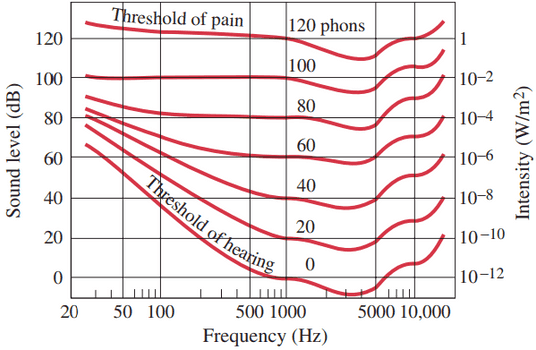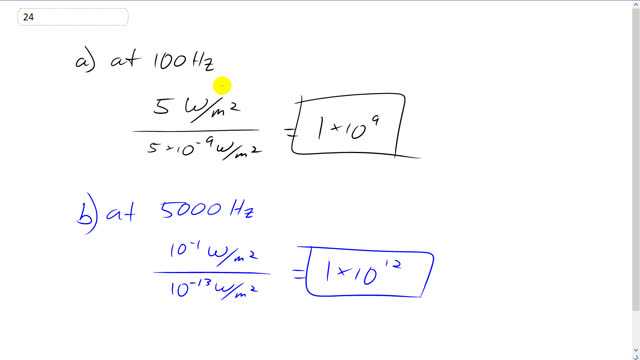
Your ears can accommodate a huge range of sound levels. What is the ratio of highest to lowest intensity at
- 100 Hz,
- 5000 Hz? (See Fig. 12–6.)


In order to watch this solution you need to have a subscription.
This is Giancoli Answers with Mr. Dychko. We have to look at figure 12-6 and find the frequency of 100 hertz and figure out what the intensity is, have a threshold of pain, that's the top red line there at 120 phons. And it's slightly above the 1. And since it's a logarithmic scale it's gonna be about 5 watts per square meter. If you go to the next major division, that would be 100. So, just slightly above 1, let's say it's 5. And divide that by the intensity at the threshold of hearing which is the lowest red line. And that passes, you know, slightly below 10 to the minus 8 and midway between 10 to the minus 8 and the next division 10 to the minus 10 and 10 to the minus 9. It's halfway between 10 to the minus 9 and 10 to the minus 8 say so that makes it 5 times 10 to the minus 9. And so that ratio is 1 times 10 to the 9. At 5,000 hertz, the ratio was much larger because the threshold of pain 5,000 is, while it's going to be less, it's about 10 to the minus 1 but the threshold of hearing is way lower, about 10 to the minus 13. So, that ratio there's 1 times 10 to the 12.
where did you get 5W/m^2 and 5 for denominator?